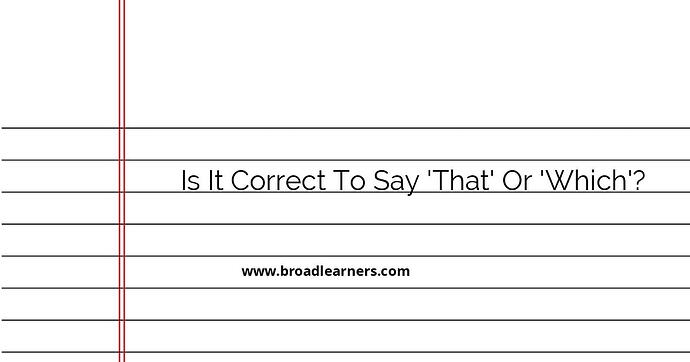When it comes to using 'that' or 'which' in a sentence, it's important to understand the difference between these two words. They are both used as relative pronouns, but have different functions and purposes.
Using 'That'
'That' is used to introduce essential or restrictive clauses in a sentence. These clauses provide necessary information to identify or define the noun they are referring to.
For example:
The book that I borrowed from the library is overdue.
In this sentence, the clause 'that I borrowed from the library' is essential to identify which book is being referred to.
Using 'Which'
'Which' is used to introduce non-essential or non-restrictive clauses in a sentence. These clauses provide additional information about the noun they are referring to, but the sentence would still make sense without them.
For example:
The book, which has a blue cover, is overdue.
In this sentence, the clause 'which has a blue cover' provides additional information about the book, but it is not necessary to identify which book is being referred to.
Choosing Between 'That' and 'Which'
To decide whether to use 'that' or 'which' in a sentence, ask yourself whether the information provided by the clause is essential or non-essential to the meaning of the sentence.
If the information is essential and necessary to identify or define the noun, use 'that'.
If the information is non-essential and provides additional details about the noun, use 'which'.
Examples:
I found the keys that I lost.
The clause 'that I lost' is essential to identify which keys are being referred to.
I found the keys, which were in my pocket.
The clause 'which were in my pocket' provides additional information about the keys, but it is not necessary to identify them.
Did I miss anything? Respond below
